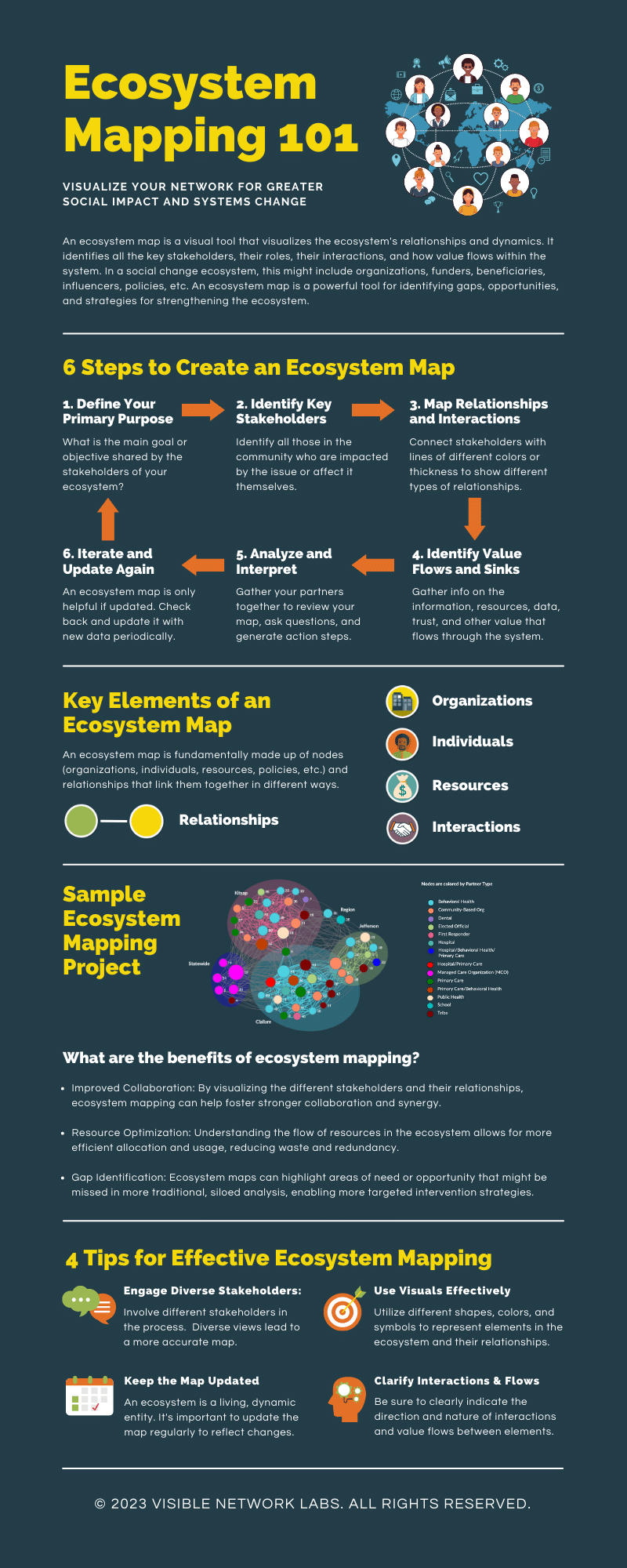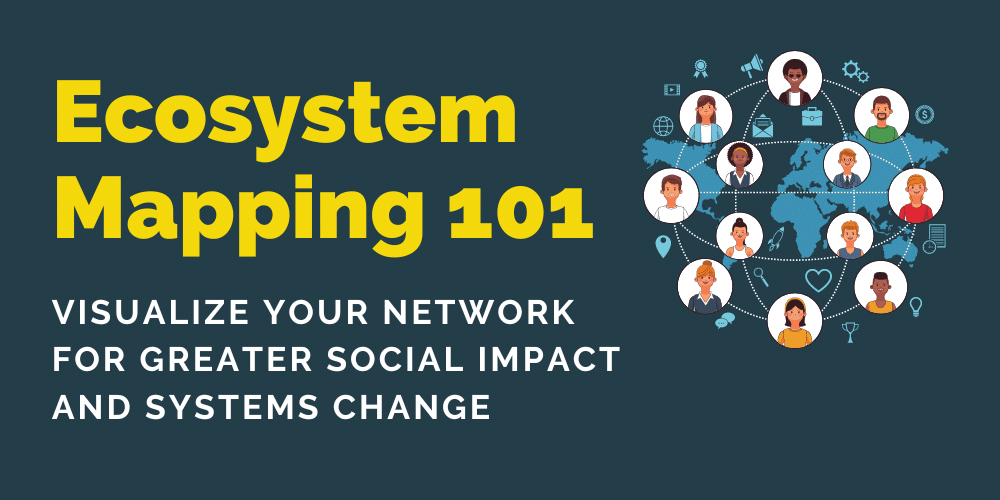Ecosystem mapping involves mapping the relationships and interactions between the networks, stakeholders, policies, and environment on a specific issue or context. For example, the public health ecosystem consists of all the organizations in the public, non-profit, and private health sector, along with social service providers, individual members of the community, the physical community and its health infrastructure, and the policy and political context that envelops it all. Ecosystem mapping is a powerful way to identify key leverage points in the system, demonstrate your shared impact , and generate strategies to shift systems and achieve greater social impact.
Our new Ecosystem Mapping 101 infographic walks through all the essentials of this exciting new process, including how to make an ecosystem map, key elements to include, the benefits of the process, and tips to get started. Let’s dig in!

Ecosystem mapping is not always easy. It takes time to collect comprehensive data about all your stakeholders, interactions, and relationships and requires skill and software to clean, map, and analyze the map itself. Many groups neglect to map their network or ecosystem because they don’t know how important it is in their overall program.
Nearly a decade ago, our CEO Dr. Danielle Varda experienced this gap as a researcher and network scientist working with community health coalitions. She created PARTNER, a platform that makes network science and mapping accessible and easy to social impact and systems change professionals.
By managing and tracking your community partnerships, relationships, and interactions, PARTNER CPRM makes ecosystem mapping easy. If our Ecosystem Mapping 101 infographic caught your attention and you want to learn more or see what’s possible for your organization, reach out to schedule a complimentary strategy session with one of our experts.
Book a Session with our Ecosystem Experts!
During your call, we’ll learn more about your organization, including your goals and mission. We can walk through some network science fundamentals and how they apply to your situation, and provide some examples and ideas for using ecosystem mapping and network analysis to advance your impact.






